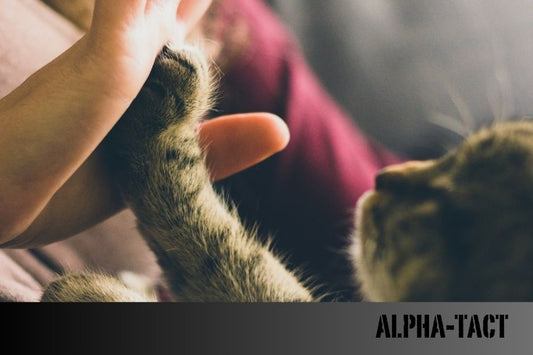
Why Does Nose Color Change in Dogs? Is It a Sign of Health or Genetics?
Share
What Does Nose Color Change in Dogs Mean?
Dogs' noses are usually black, brown or pink. However, in some cases, the nose color can change over time. This change can be permanent, seasonal or temporary. Although color change is often innocent, in some cases it can be a sign of underlying health problems.
1. Genetic Factors
In some dog breeds, nose color changes can be entirely genetic. Seasonal or permanent changes in nose color are particularly common in the following breeds:
-
Siberian Husky
-
Labrador Retriever
-
Golden Retriever
-
Bernese Mountain Dog
-
Samoyed
-
Border Collie
The condition called "snow nose" or "winter nose" seen in these breeds is the nose color lightening in the winter months and darkening again in the summer. This is completely harmless and natural is a process.
2. Seasonal Change (Winter Cape)
With the decrease in daylight hours during the winter months, some dogs may experience pigment loss in their noses. This condition is called "winter nose." The nose, which is usually black, may turn brown or pink during the winter months. In the spring, the nose returns to its former dark color due to the sun.
Why does it happen?
Melanin pigment varies depending on sunlight. In periods when sunlight is low, melanin production decreases and the nose color may lighten.
3. Aging
As dogs age, their nose color can change. Just like people's hair turns gray, dogs can also lose pigment. This is especially noticeable on the nose, around the eyes, and around the lips.
4. Trauma and Injuries
Physical trauma to a dog's nose, such as a blow, burn or scratch, can cause pigment loss. After the trauma, crusting, peeling and discoloration may occur on the nose. These types of discolorations are usually localized and do not affect the entire nose.
5. Allergic Reactions
Allergic reactions to certain substances, such as plastic food and water bowls, can cause nose color changes in dogs. This condition is called “ plastic dermatitis .” Symptoms include:
-
Lightening of nose color
-
Redness around the nose
-
Itching and dryness
It is recommended to use stainless steel or ceramic containers instead of plastic containers.
6. Vitiligo
Vitiligo is a skin disease that can occur in both humans and dogs. In this condition, pigment loss occurs in the skin and nose. Dogs with vitiligo their nose may turn completely pink over time. It is usually an autoimmune condition and is more common in certain breeds of dogs.
Vitiligo is most common in the following races:
-
Rottweiler
-
Doberman
-
Belgian Shepherd Dog
-
German Shepherd
7. Autoimmune Diseases
Sudden changes in nose color may be a symptom of some autoimmune diseases, such as:
-
Lupus
-
Pemphigus
-
DLE (Discoid Lupus Erythematosus)
In these diseases, nasal discoloration, crusting, ulcers and peeling of the nasal skin may be observed. Such situations requires veterinary intervention.
8. Hypothyroidism
Hypothyroidism, one of the hormonal disorders seen in dogs, can cause decreased nasal pigment. Especially feather loss, weight gain, weakness If the nose color is lightened along with symptoms such as these, a veterinary check-up is definitely necessary.
9. Nutritional Deficiencies
Zinc, vitamin B12 and deficiency of some essential amino acids can affect nose pigmentation. As a result of poor quality food, single type of nutrition or digestive disorders, nose color may lighten. In this case, supplementation may be required under veterinary control.
When to Visit a Vet?
If the change in nose color is accompanied by the following symptoms, veterinary control is essential:
-
Wounds, crusts, ulcers in the nose
-
Excessive scratching, dryness
-
Hair loss and weight loss
-
Weakness and loss of appetite
-
If the nose is completely peeling off
Ways to Protect Nose Color in Dogs
-
Feeding with quality food: Choose food rich in vitamins such as zinc and B12.
-
Sun exposure: Sunlight promotes melanin production.
-
Avoid plastic containers: Use ceramic or steel utensils to reduce the risk of allergic reactions.
-
Veterinary check: In case of sudden color changes, be sure to get expert advice.
Conclusion: Not Every Color Change Is Dangerous
A change in nose color in dogs is not always a sign of disease. Genetic characteristics , seasonal factors And aging Natural processes such as can also cause this situation. However, sudden color changes And accompanying symptoms could be a sign of serious health problems.
Therefore, observe the changes in your beloved friend's nose carefully. If necessary, consult a veterinarian and intervene correctly and in a timely manner.
Frequently Asked Questions (FAQ)
1. Why did my dog's nose turn pink?
It can be caused by genetics, seasonal changes, allergies or health problems. This is especially common during the winter months.
2. Is the change in nose color permanent?
Some changes are permanent (such as aging, vitiligo), while others may be temporary (winter nose, allergic reaction).
3. What precautions can I take at home?
Replace plastic food bowls, pay attention to feeding and provide sunlight.
If you have noticed a change in your dog's nose color, this guide will provide you with important tips. If you are unsure about your observations, be sure to consult your veterinarian.











